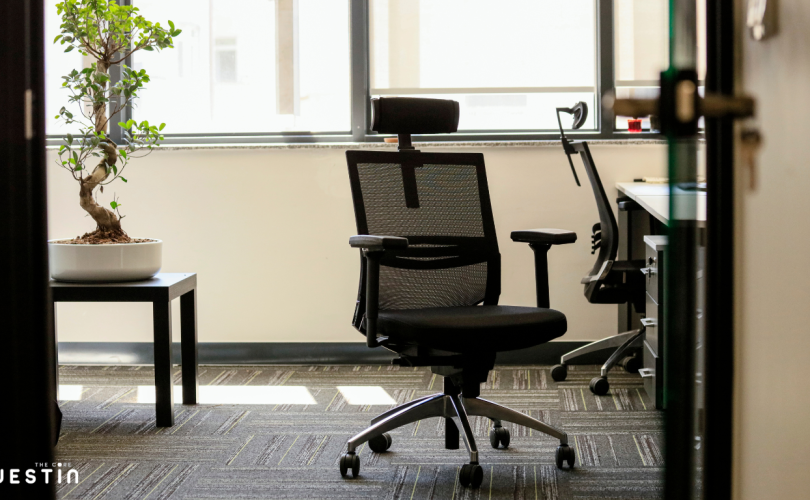The financial year reset is upon us, and with it comes the sacred ritual of budget planning. Across boardrooms, spreadsheets glow with freshly projected figures, and leaders make the annual pilgrimage to debate costs, investments, and—somewhere in the mix—employee wellbeing.
Traditionally, this conversation culminates in a well-intentioned yet predictable line item: the grand annual offsite. A two-day retreat in a serene locale, breakout sessions peppered with ‘trust falls.’ Now, I love a good offsite as much as the next person. They serve a purpose. But if your entire strategy for employee wellbeing hinges on one getaway, you might be missing the plot.
The Complexity of Work Requires a Rethink on Wellbeing
Modern workplaces are evolving at breakneck speed. Employees juggle shifting priorities, digital transformation, hybrid work models, and mounting pressures to ‘do more with less.’ The result? 61% of employees report daily work-related stress (Deloitte), and organizations that fail to adapt are seeing record levels of disengagement and attrition.
A scenic offsite may feel like a refreshing escape, but it’s a fleeting one. If the day-to-day reality of work is overwhelming, employees don’t need a pause button—they need an entirely new way of working.
An Integrated Approach: Embedding Wellbeing Into Work Itself
Instead of treating wellbeing as an add-on, organizations must weave it into the very fabric of work. This means designing an environment where people feel supported, engaged, and able to thrive—not just for two days in a retreat, but every single day.
1. Balance Autonomy and Structure
Workplace complexity often stems from conflicting demands: employees crave flexibility, but also clarity and structure. 75% of workers are more productive with hybrid work options (Microsoft), yet lack of coordination can lead to burnout.
Solution: Offer flexible work arrangements, but pair them with clear team agreements on communication, deliverables, and expectations. Ensure workloads are regularly assessed to prevent imbalance.
2. Make Growth a Continuous Process, Not a One-Time Event
A World Economic Forum report found that 94% of business leaders expect employees to acquire new skills on the job—yet few integrate skill-building into wellbeing strategies. Organizations that prioritize development see 34% higher engagement (Harvard Business Review).
Solution: Foster a culture of continuous learning through mentorship, coaching, and career mobility pathways. Employees who see growth opportunities are more likely to stay engaged and committed.
3. Embed Coaching as a Strategic Advantage
Employees and leaders alike need guidance to navigate the increasing complexity of the workplace. Coaching isn’t just for executives; when applied broadly, it builds resilience, problem-solving skills, and adaptability across all levels of the organization.
Solution: Invest in structured coaching programs that provide employees with ongoing support, reflection, and growth opportunities. Regular one-on-one coaching can help individuals manage stress, clarify goals, and build confidence. Managers, too, should be trained as coaches to foster a culture of continuous feedback and empowerment.
4. Foster Psychological Safety and Connection
Google’s landmark Project Aristotle study found that psychological safety is the #1 predictor of high-performing teams. Yet, in many workplaces, employees hesitate to speak up or ask for help.
Solution: Train leaders to create trust-based environments where people feel safe sharing ideas, admitting mistakes, and seeking support. Encourage regular team check-ins focused on open dialogue and emotional resilience.
5. Design Work for Sustainable Performance
A well-rested workforce is a productive workforce. Yet, many organizations still equate long hours with commitment, despite overwhelming evidence to the contrary.
Solution: Implement recharge strategies like quarterly company-wide reset days, meeting-free focus periods, and realistic goal-setting that prioritizes impact over hours worked.
6. Prioritize Meaningful Work and Recognition
People are 3x more engaged when they see clear purpose in their roles (Deloitte). When employees feel valued and know their contributions matter, their overall wellbeing improves.
Solution: Ensure work is aligned with a greater purpose, and embed recognition into everyday operations. Publicly celebrate contributions, and provide continuous feedback—not just in annual reviews.
Rethinking the Wellbeing Budget
Imagine you’re budgeting for company infrastructure. Would you spend the entire maintenance budget on a single deep clean while ignoring daily upkeep? Of course not. Employee wellbeing should be treated with the same mindset.
A Wellbeing Budget That Works Year-Round
Instead of spending disproportionately on a single event, your budget should include:
- Sustained wellbeing programs (coaching, therapy stipends, ergonomic support)
- Leadership training for a wellbeing-first culture
- Systemic work redesign (flexible policies, workload balance, meaningful work integration)
- Quarterly well-being interventions (reset days, stress audits, ongoing check-ins)
By all means, book that offsite. But also ask: Are you funding wellbeing for the 363 other days of the year? If not, your budget—and your leadership—might need a rethink.
After all, a thriving workforce isn’t built in a weekend retreat. It’s built in the everyday moments where people feel seen, supported, and set up to succeed.
Now, that’s a line item worth investing in.







